*NURSING > QUESTIONS & ANSWERS > NUNP 6541N midterm revision questions solutions with answers (2020 solution) Walden University (All)
NUNP 6541N midterm revision questions solutions with answers (2020 solution) Walden University
Document Content and Description Below
NUNP 6541N midterm revision questions solutions with answers (2020 solution) Walden University • Question 1 When completing this quiz, did you comply with Walden University’s Code of Con... duct including the expectations for academic integrity? • Question 2 By what age should most children be able to sit well without support? • Question 3 All of the following are consistent with peritonsillar abscess except: • Question 4 You would be concerned about the language development of a child who: • Question 5 Which of the following is a true contraindication of vaccinating a child? • Question 6 Which of the following statements about "routine" screening tests is true? • Question 7 You are performing an examination of a 3-year-old who is new to your office. Which finding requires immediate further evaluation? • Question 8 A mother of a 6-month-old asks you about normal sleep patterns for an infant this age. The best response is: • Question 9 You see a healthy 18-month-old for a well-child visit. At the 12-month visit he received the diphtheria, tetanus, and acellular pertussis (DTaP) third dose; hepatitis B second dose; measles, mumps, and rubella (MMR) first dose; injected poliovirus (IPV) second dose; pneumococcal conjugate (PCV13) fourth dose; and Haemophilus influenzae type B (Hib) fourth dose. Which of the following do you order today? • Question 10 Which of the following signs may indicate a baby is not receiving sufficient breastmilk? • Question 11 Sarah, age 15, presents with pain and pressure over her cheeks and discolored nasal discharge. You cannot transilluminate the sinuses. You suspect which common sinus to be affected? • Question 12 An expected milestone of a 4-year-old is the ability to • Question 13 A child's head circumference is routinely measured on each well visit until what age? • Question 14 A healthy, well-developed 6-year-old child arrives as a new patient to your clinic. His immunization card reveals that he received an immunization at birth and some when he was 2 months old, but none sense. Which of the following statements about him is correct? • Question 15 A 4-year-old believes there is more juice in a tall, thin glass than a shorter, wider one. The child has not yet achieved which of the principles of Piaget? • Question 16 Conductive hearing loss can be caused by • Question 17 Miguel, age 14, was hit in the eye with a baseball and developed eye pain, decreased visual acuity, and injection of the globe. Upon exam you note blood in the anterior chamber and confirm diagnosis of hyphema. What treatment do you recommend while Miguel is waiting to see the ophthalmologist • Question 18 A child's central visual acuity is 20/30 by age • Question 19 A 9-year-old who weighs 70 pounds asks why she can't sit in the front passenger seat of the family car. Your best response is • Question 20 You receive a phone call from the mother of a 2-year-old. She states her child has sleep refusal. You suggest the child should be able to: • Question 21 An 8-year-old female is brought into the office by her mother. She has complaints of fever and sore throat for the past 2 days. She denies difficulty swallowing but has loss of appetite and mild diarrhea. A few classmates have similar symptoms. A review of systems reveals clear nasal drainage, dry cough, and hoarseness. On exam she has a 101.5 temperature, 3+ erythematous tonsils, and anterior cervical lymphadenopathy. What is the likely diagnosis? • Question 22 You see a 4-year-old for a well-child visit. He has received four diphtheria, tetanus, and acellular pertussis vaccines (DTaP); three injected polio vaccines (IPV); one measles, mumps, and rubella vaccine (MMR); one varicella vaccine; and two hepatitis B (Hep B) vaccines. What do you order today? • Question 23 A 13-month-old child is noted to be at the 25th percentile for weight, the 10th percentile for height, and less than the 5th percentile for head circumference. She was born at term. She was noted to have a small head at birth, to be developmentally delayed throughout her life, and to have required cataract surgery shortly after birth. She currently takes phenobarbital for seizures. Which of the following would most likely explain this child’s small size? • Question 24 At what age would a child be expected to remember a string of numbers and repeat them backwards? • Question 25 A 4-month-old child has poor weight gain. Her current weight is less than the 5th percentile, height about the 10th percentile, and head circumference at the 50th percentile. The planned pregnancy resulted in a normal, spontaneous, vaginal delivery; mother and child were discharged after a 48-hour hospitalization. Feeding is via breast and bottle; the quantity seems sufficient. The child has had no illness. The examination is unremarkable except for the child’s small size. Screening laboratory shows the hemoglobin and hematocrit are 11 mg/dL and 33% respectively, with a platelet count of 198,000/mm3. Serum electrolyte levels are sodium 140, chloride 105, potassium 3.5, bicarbonate 17, blood urea nitrogen 15, and creatinine 0.3. Liver function tests are normal. Urinalysis reveals a pH of 8 with occasional epithelial cells but no white blood cells, bacteria, protein, ketones, or reducing substances. Which of the following is the most appropriate therapy for this child? • Question 26 A 14-year-old female comes into the office for an urgent visit after taking 10 valium tablets. Following the initial emergent care and stailization, the most important part of the management is: • Question 27 A mother brings her 4-week-old infant into the office because she noticed small yellow-white glistening bumps on her infant's gums. She says they look like teeth but is concerned that they may be cancer. You diagnose these bumps as • Question 28 Appropriate anticipatory guidance for the parents of an 8-year-old girl includes • Question 29 A differential diagnosis for child abuse would include all of the following except. • Question 30 An eye that deviates in when covered but that returns to midline when uncovered is an • Question 31 Sarah, 7 years old, is in the office today. All of the following are acceptable management options for allergic rhinitis, except • Question 32 Which of the following eye findings would be considered an ophthalmic emergency? • Question 33 Mark is in the exam room. You are concerned he may have epiglottitis. In what position do these patients prefer to sit? • Question 34 Which is the correct order for introduction of solid foods to an infant? • Question 35 Role-play with equipment during the course of the physical exam would be the most beneficial with which age group? • Question 36 A 2-year-old boy has been slightly less than the 50th percentile for weight, height and head circumference, but in the last 6 months he has fallen to slightly less than the 25th percentile for weight. The pregnancy was normal, his development is as expected, and the family reports no psychosocial problems. The mother says that he is now a finicky eater (wants only macaroni and cheese at all meals), but she insists that he eat a variety of foods. The meals are marked by much frustration for everyone. His examination is normal. Which of the following is the best next step in his care? • Question 37 A 3-year-old (37 months) refuses to have bowel movements on the toilet. He is bladder trained. He goes and hides and squats when having bowel movements. Positive encouragement and praise is not working. You advise: • Question 38 You see a 3-year-old for a well-child visit. His mother informs you that potty training has been very easy because he “has an amazing internal clock. He falls asleep, gets hungry, and has bowel movements at the same time every day.” This describes which aspect of temperament? • Question 39 Which adolescent would be at greatest risk for developing anorexia nervosa? • Question 40 Mark, a 10-year-old, has a lot of ear pain. He does not want anyone to touch it and is crying in pain. The ear canal is swollen and exudate is preswent. The TM is normal. What is the proper management for his patient? • Question 41 FIRST-LINE therapy for preschoolers (4-5 years of age) diagnosed with attention-deficit hyperactive disorder is: • Question 42 Which of the following screenings should adolescents have done annually? • Question 43 A 12-year-old male states he noticed an enlargement of his testes and scrotum. When counseling him about the next step in pubertal development, you state: • Question 44 A breastfed infant is expected to have a lower incidence of which of the following? • Question 45 Most children can independently get dressed by themselves by age: • Question 46 Which of the following statements is true regarding lying and stealing by the school-age child? • Question 47 The diagnostic criteria for autism spectrum disorder include all of the following except • Question 48 A 2-year-old child weighs 34 lb. What type of car seat should the child use? • Question 49 You see a young child who has tripled her birth weight and looks for hidden objects. When given blocks, she places one in each hand. She has a fine pincer grasp. On the floor, she walks around holding objects and is trying to take independent steps. This child is most likely how old? • Question 50 A 2-day-old newbornwith conjunctivitis is likely due to • Question 51 Which of the following strategies would not be appropriate to include as part of your treatment plan of an 8-year-old boy who is obese? • Question 52 Please interpret the following labs for an adolescent. The adolescent has a history of obesity and acanthosis nigricans. Test Results Fasting blood glucose 112 mg/dL 2 hour postprandial glucose 138 mg/dL • Question 53 For adolescent girls, peak height velocity should occur by Tanner Stage (SMR): • Question 54 You see a 30-month-old who speaks in mixed Spanish and English. The child’s vocabulary is normal but at the low end of the normal language spectrum. The parent is worried the child’s development will not be normal because she mixes up the two languages. You respond: • Question 55 Which of the following characterizes middle adolescence (14 to 16 years old)? • Question 56 What method can be safely used to remove cerumen in a 15-month-old child's ear? • Question 57 Which of the following statements about bullying is true? • Question 58 Hannah, age 4, is brought into the office by her father. She complains of a sore throat, difficulty swallowing, copious oral secretions, stridor, and a temperature of 102F. She does not have pharyngeal erythema or cough. What do you suspect? • Question 59 A new mom calls the NP on postpartum day 5. She reports her newborn wants to nurse for 30 minutes every 1-1/2 to 2 hours. Which of these is the best response? • Question 60 Which of the following vaccines is routinely recommended at 4 months of age? • Question 61 What is the most common form of child abuse seen in pediatric primary care? • Question 62 Early reflexive responses that are not related to survival include all but: • Question 63 A 14-year old has ataxia. He is brought to the local emergency department, where he appears euphoric, emotionally labile, and a bit disoriented. He has nystagmus and hypersalivation. Many notice his abusive language. Which of the following agents is most likely responsible for his condition? • Question 64 A fifteen-year-old female makes a statement to you during a well visit. Which of the following statements should not be kept confidential? • Question 65 Upon eye examination of a newborn, you note inner canthal folds and Brushfield spots. What do you suspect? • Question 66 You see a 6-month-old for a well-child visit and the mother tells you the child’s grandmother recommends that she give the infant whole milk and eggs when he starts solids. What should you tell the mother? • Question 67 The parents of a 7-year-old are concerned their son does not want to attend school. Which of the historical findings are not usually associated with the diagnosis of school phobia? • Question 68 A common feature of 2-year-old behavior is: • Question 69 Which of the following is a priority nurse practitioner role to help children and adolescents to have healthy sexual development? • Question 70 The parent of a 2-year-old tells you her daughter recently started having breath-holding spells. She tells you the older sibling “did the same thing” and asks you for help. You advise her that after a breath-holding event: • Question 71 Appropriate advice for a mother of a 2-week-old child here for a “well child” visit includes which of the following? • Question 72 Luke, a 17-month-old, failed treatment with amoxicillin for otitis media. At the two-week recheck, his TM was still erythematous and you cannot see the landmarks. He has persistent nasal congestion, he is not sleeping at night, and he has a 101°F fever. What is the next best step for Luke? • Question 73 A teenage female who is overweight has moderate acne on the face and chest, and irregular menses. Elevation of which laboratory test provides the test evidence of polycystic ovarian syndrome? • Question 74 The appropriate lab tests in assessment of cervical adenitis include all of the following except: • Question 75 Which of the following are important considerations when screening child refugees for tuberculosis? SELECT TWO (2) • Question 76 The father of a 3-year-old is concerned because the child stutters. What should your approach be? • Question 77 A 19-month-old says “mama” and “dada,” points and gestures if he wants things, and follows simple one-step commands. Your best response is which of the following? • Question 78 During a domestic health assessment, the CDC recommends screening every refugee child for which of the following diseases? • Question 79 Which of the following children has abnormal language development? • Question 80 Initial screening tests for an 11-year-old with a family history of hyperlipidemia and weight at the 97th percentile include: • Question 81 Which of the following conditions requires urgent inpatient admission? • Question 82 Parents bring their 6-month-old son to see you. He is symmetrically less than the 5th percentile for height, weight and head circumference. He was born at 30 weeks’ gestation and weighed 1000g. He was a planned pregnancy, and his mother’s prenatal course was uneventful until an automobile accident initiated the labor. He was ventilated for 3 days in the intensive care unit but otherwise did well without ongoing problems. He was discharged at 8 weeks of life. Which of the following is the most likely explanation for his small size? • Question 83 Which of the following would not suggest an eating disorder with a purging component? • Question 84 Parents bring their 16-year-old daughter for a “well-child” checkup. She looks normal on examination. As part of your routine care you plan a urinalysis. The father pulls you aside and asks you to secretly run a UDS on his daughter. Which of the following is the most appropriate course of action? • Question 85 Which of the following complication of strep pharyngitis cannot be prevented with antibiotics? • Question 86 A Mantoux test in a child with no risk factors is considered positive with a reaction of: • Question 87 Mark, a 10-year-old, has a lot of ear pain. He does not want anyone to touch it and is crying in pain. The ear canal is swollen and exudate is present. The TM is normal. Mark should be instructed to do which of the following? • Question 88 A typically developing 8-year-old girl will have which of the following genital development? • Question 89 Which of the following substances is associated with pupillary constriction? • Question 90 Head and chest circumferences should be equal at: • Question 91 Acute otitis media can be diagnosed when there is • Question 92 I can walk well on tiptoes, my speech is 50% understandable, I know six body parts, but I cannot balance on one foot for 1 second. I am: • Question 93 You see a 7-year-old with complaints of "having accidents at night." Physical exam and history are unremarkable. Urinalysis, urine culture, and specific gravity are normal. His parents ask about the best treatment for this problem. The best response is • Question 94 You diagnose a 16-year-old with acute otitis media and need to prescribe an antibiotic with beta-lactamase coverage. What do you choose? • Question 95 While assessing the skin of an infant, you note cafe-au-lait spots. Which disease should be ruled out? • Question 96 You see a 5-month-old who is fussy, has interrupted sleep, and is drooling. You note large lower lateral incisor bulges. You recommend: • Question 97 A 6-month-old infant has been growing poorly. His parents have changed his formula three times without success. His examination is remarkable for a pale, emaciated child with little subcutaneous fat and anterior fontanelle fullness. His laboratory test results are notable for a hemolytic anemia and prolonged bleeding times. Which of the following is the most appropriate next step? • Question 98 Max, a 9-year-old boy, is a very active child with limited self-control. He is easily distracted and has difficulty staying on task. You determine that he should have a neurodevelopmental evaluation because he is showing signs of • Question 99 Which of the following represents normal sequencing of development in a toddler? • Question 100 Sam has an otitis media. He also presents with conjunctivitis. This is due to which organism? • Question 101 Sally, age 4, presents to the office with her mother for a well-child visit. To assess for age-appropriate fine motor skills, what activity would you ask her to perform? [Show More]
Last updated: 1 year ago
Preview 1 out of 18 pages
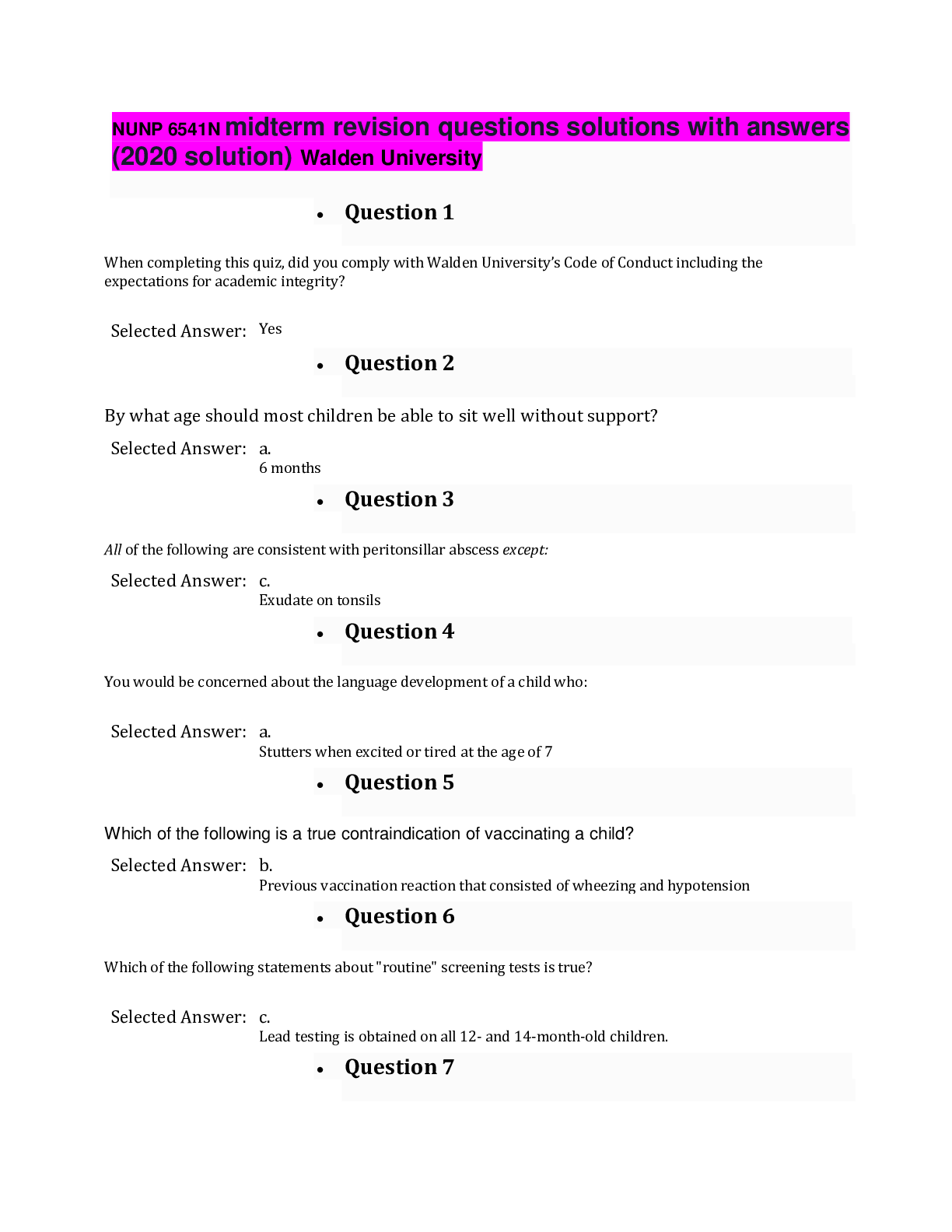
Reviews( 0 )
Document information
Connected school, study & course
About the document
Uploaded On
Sep 06, 2020
Number of pages
18
Written in
Additional information
This document has been written for:
Uploaded
Sep 06, 2020
Downloads
0
Views
55




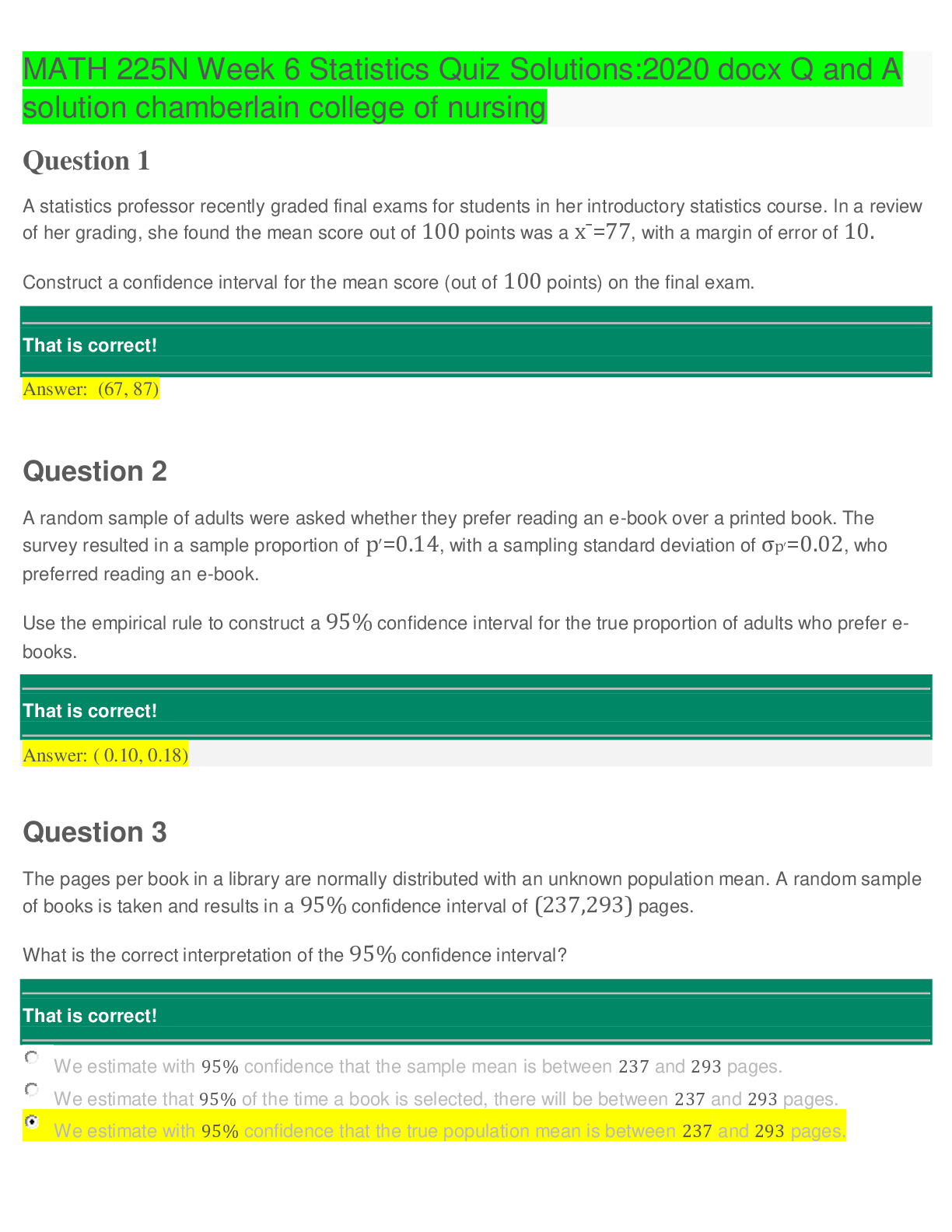

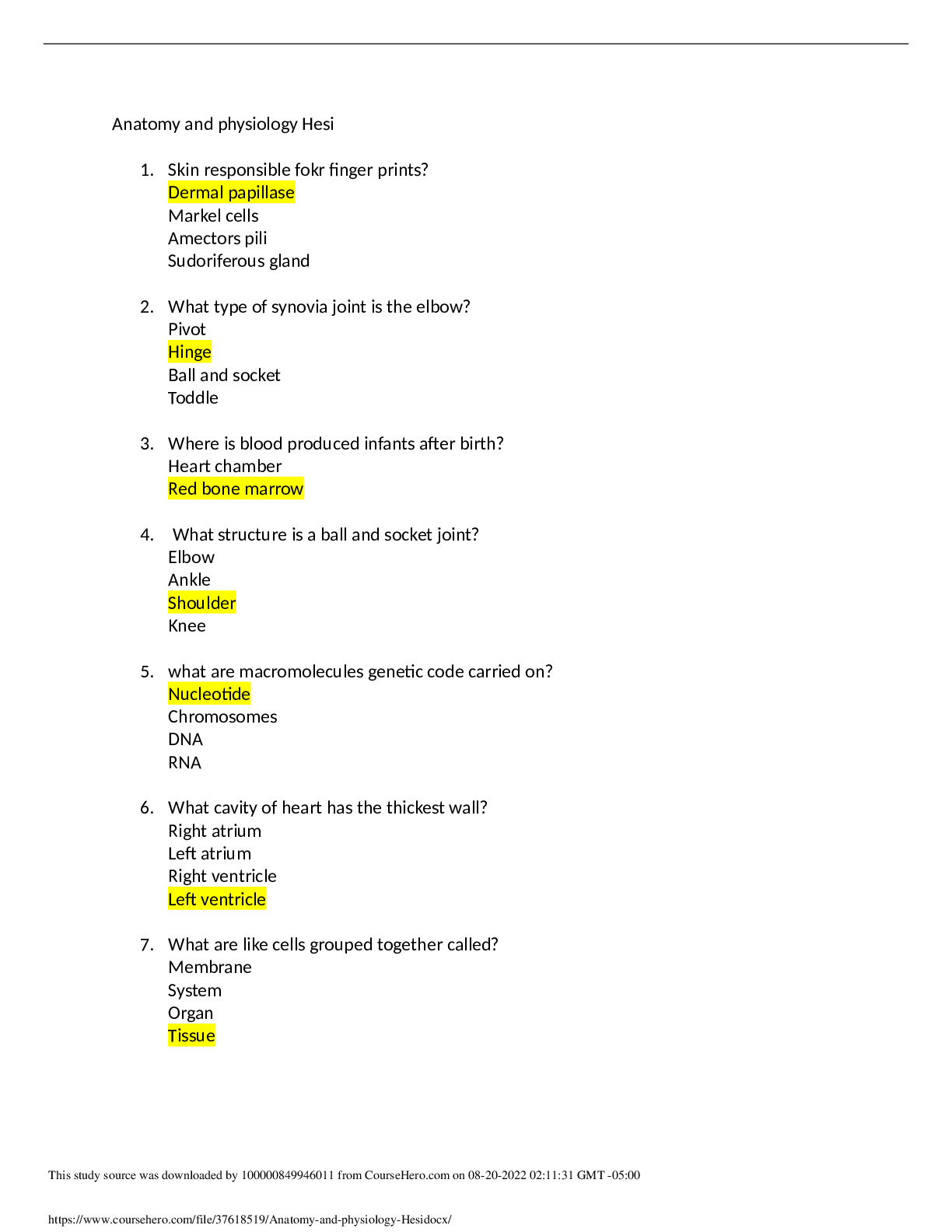

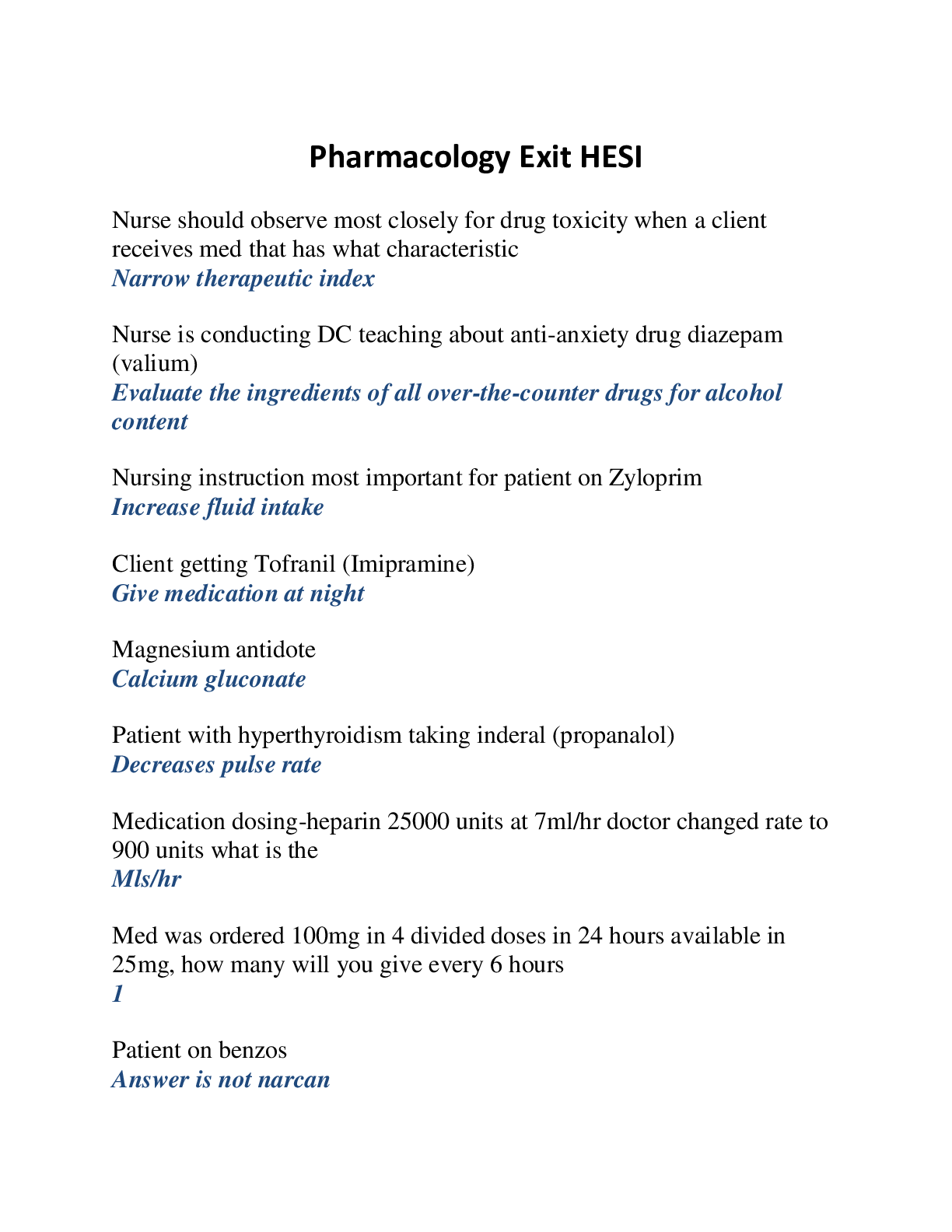
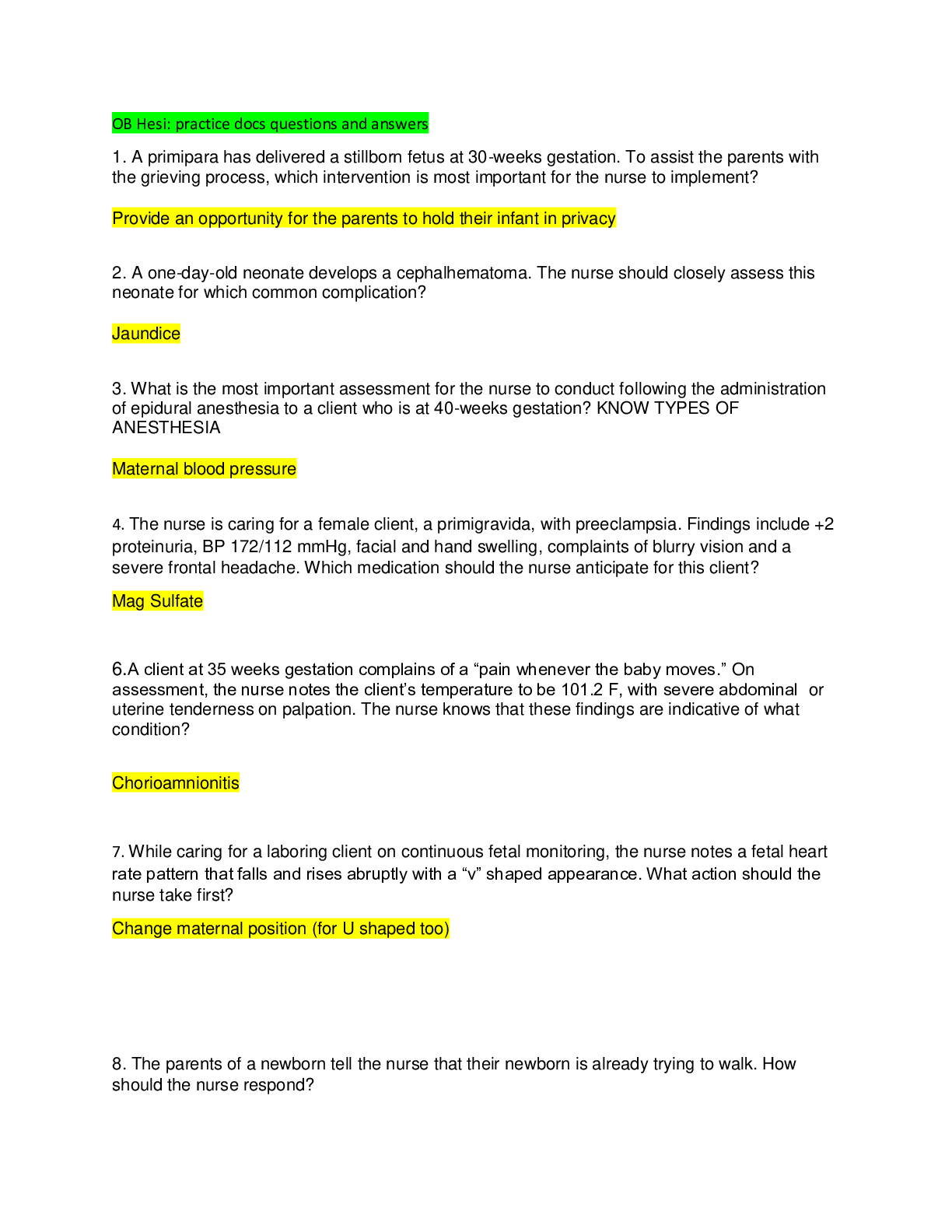
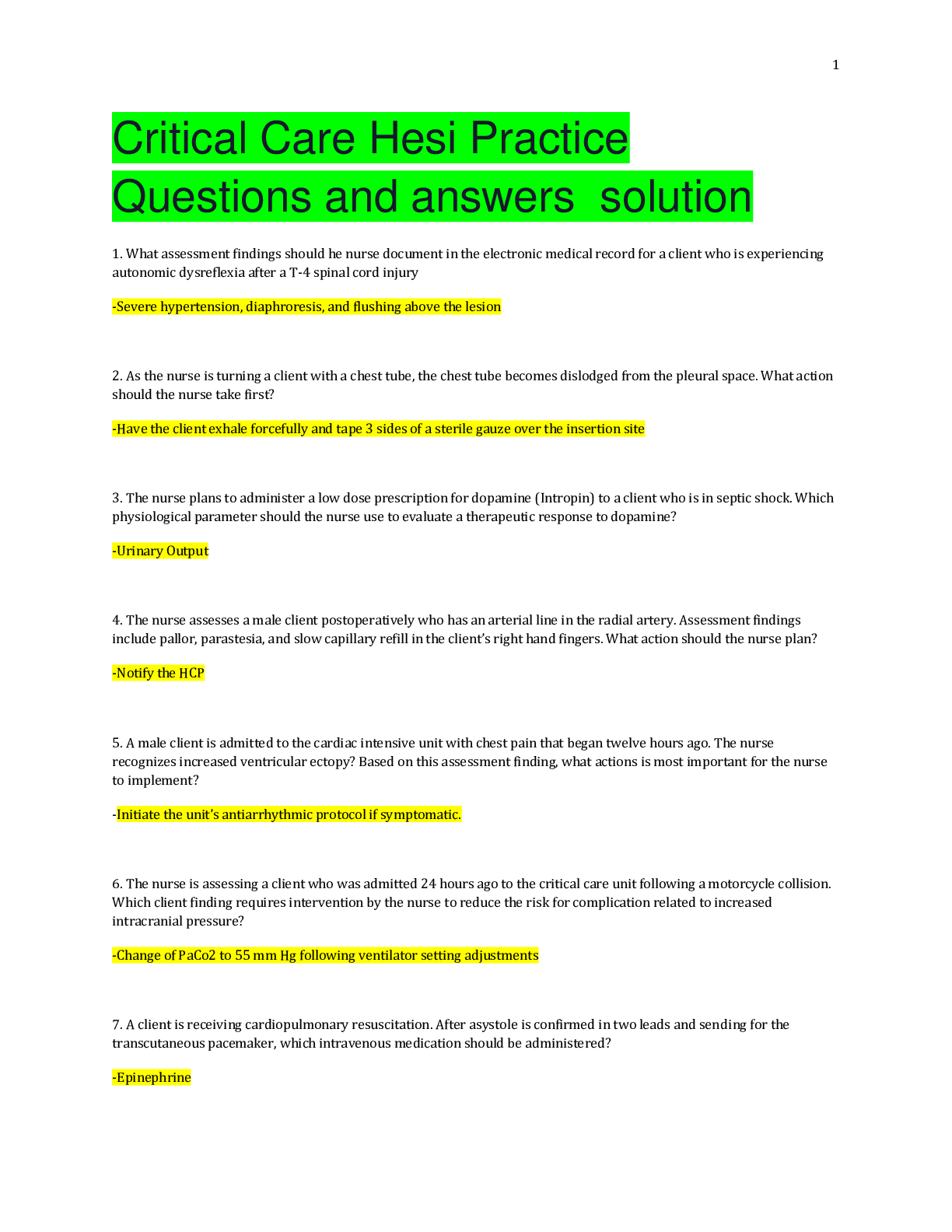
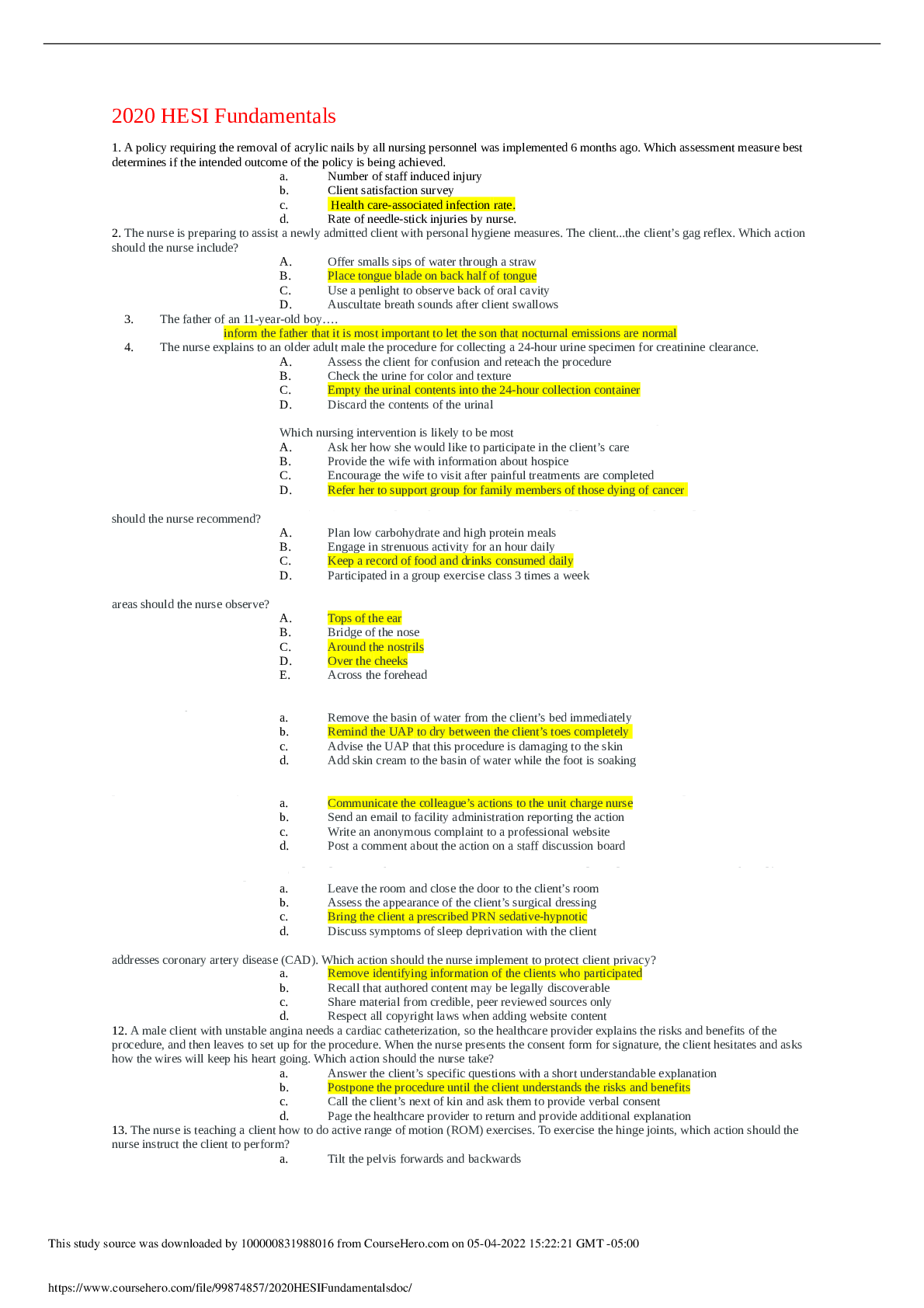

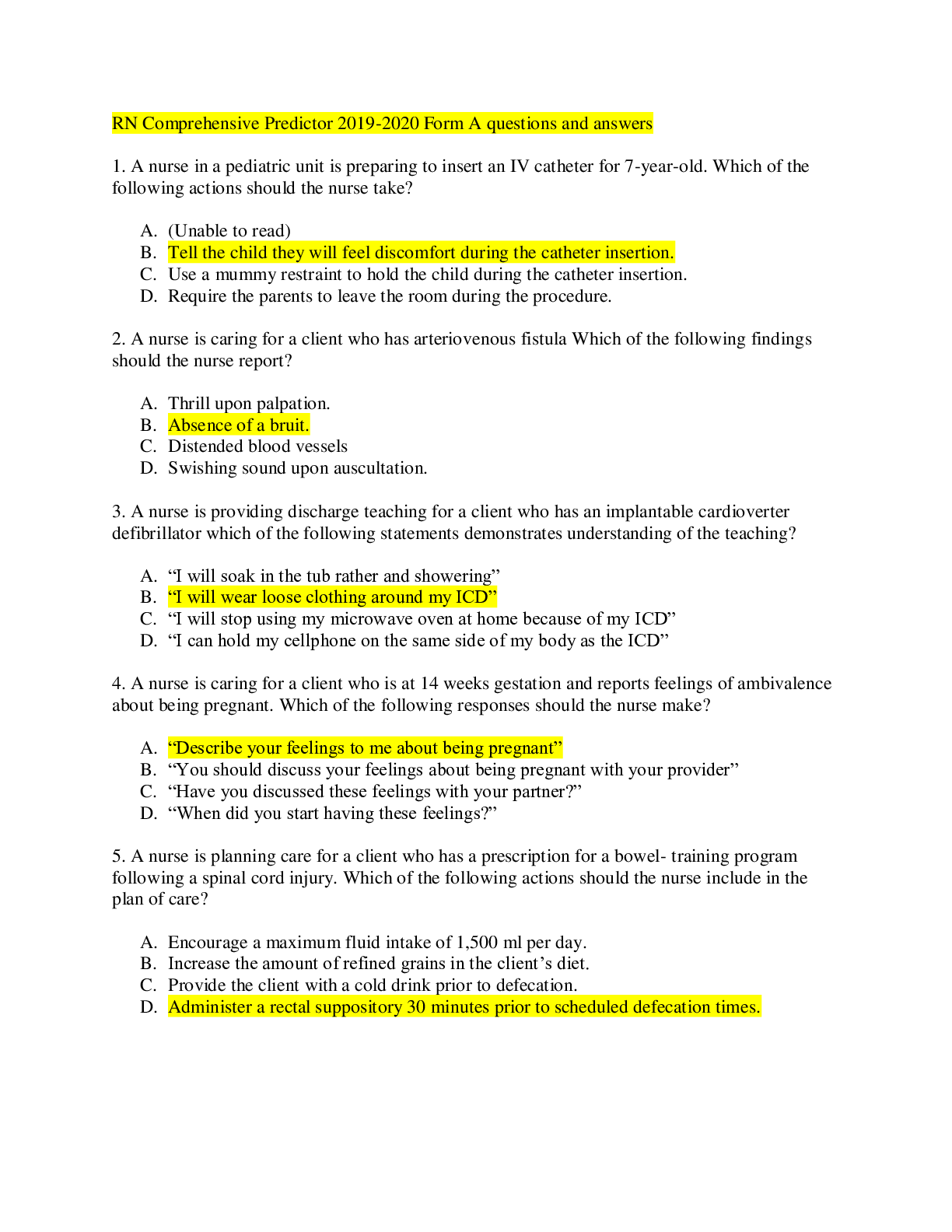

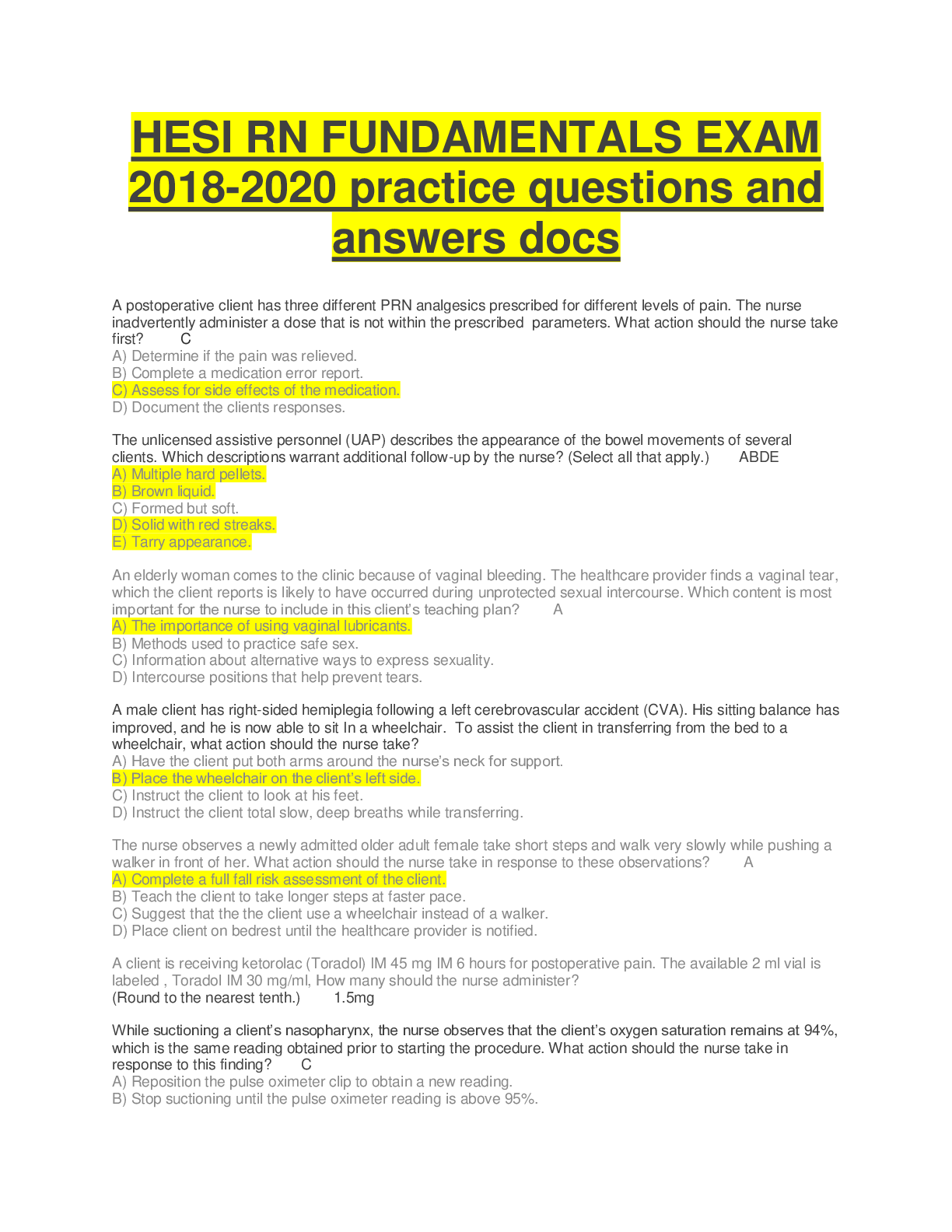
 2020 ans.png)

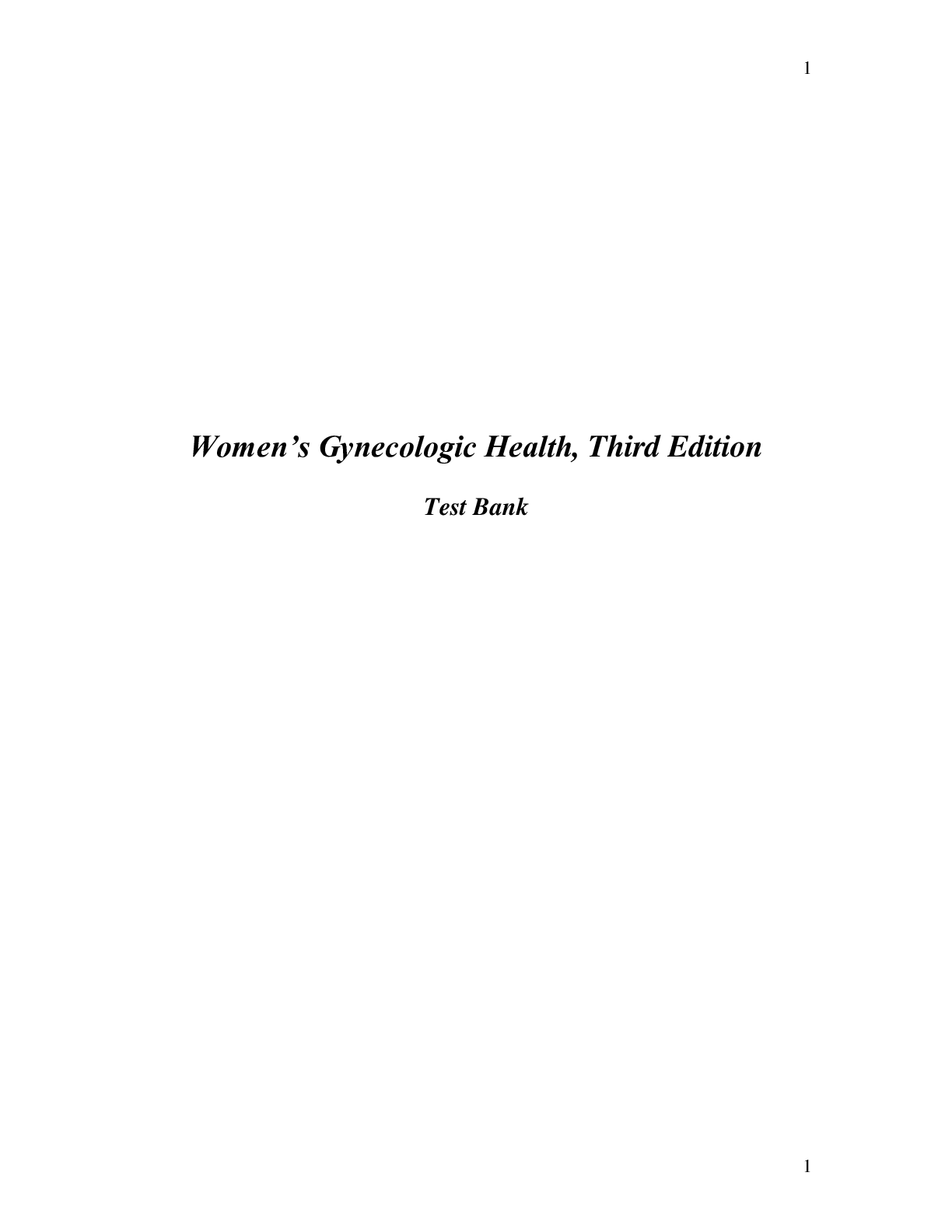



.png)

.png)




.png)
.png)

.png)





